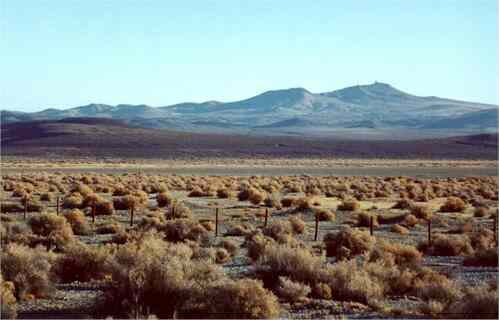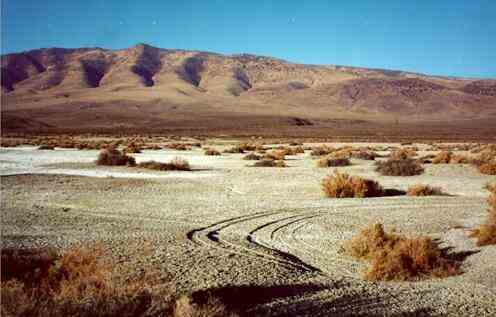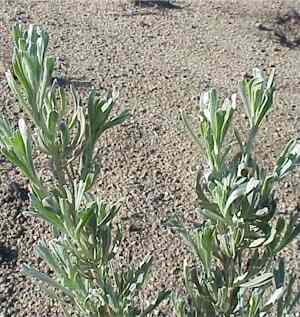| GREAT
BASIN Major areas of the The Great Basin Desert have a high salt content, caused by the low rainfall and very high evaporation potential [for example, the Great Salt Lake and Salt Lake City lie within this Desert]. In salty soils the typical sagebrush community is replaced by saltbushes (Atriplex species) and often even these are scattered widely in the saltiest environments, where the soil appears white from the salt deposits (see second image below).
The rest of the Great Basin Desert is dominated by a few perennial plants, highly adapted to low water availability. Most of the precipitation occurs as snow in winter months. Big sagebrush (Artemisia tridentata) is a dominant shrub, mixed with grasses, rushes and rabbit brush (bottom left).
Big sagebrush Big sagebrush (Artemisia tridentata) is one of the most abundant desert shrubs. It dominates much of the Great Basin Desert in regions where the soil is not saline. In addition, this or closely related species of sagebrush extend southwards into California and the Baja California region of Mexico.
The plants frequently grow to 1.5 metres height, with a pronounced woody stem. The leaves are wedge-shaped, greyish-green, hairy, strongly aromatic, up to 4 cm long and usually are held in upright clusters. Typically, the leaves are indented at the tip, with 3 or more blunt "teeth".
On dry rocky slopes, big sagebrush often occurs in mixed communities with other shrubs or small trees. An example of this is seen below, where a rocky hillside on the outskirts of San Diego (California) is covered with big sagebrush (grey-green areas), Ephedra species, and low-growing oaks (foreground and the brighter green areas) such as shrub live oak and emory oak
|
||||






